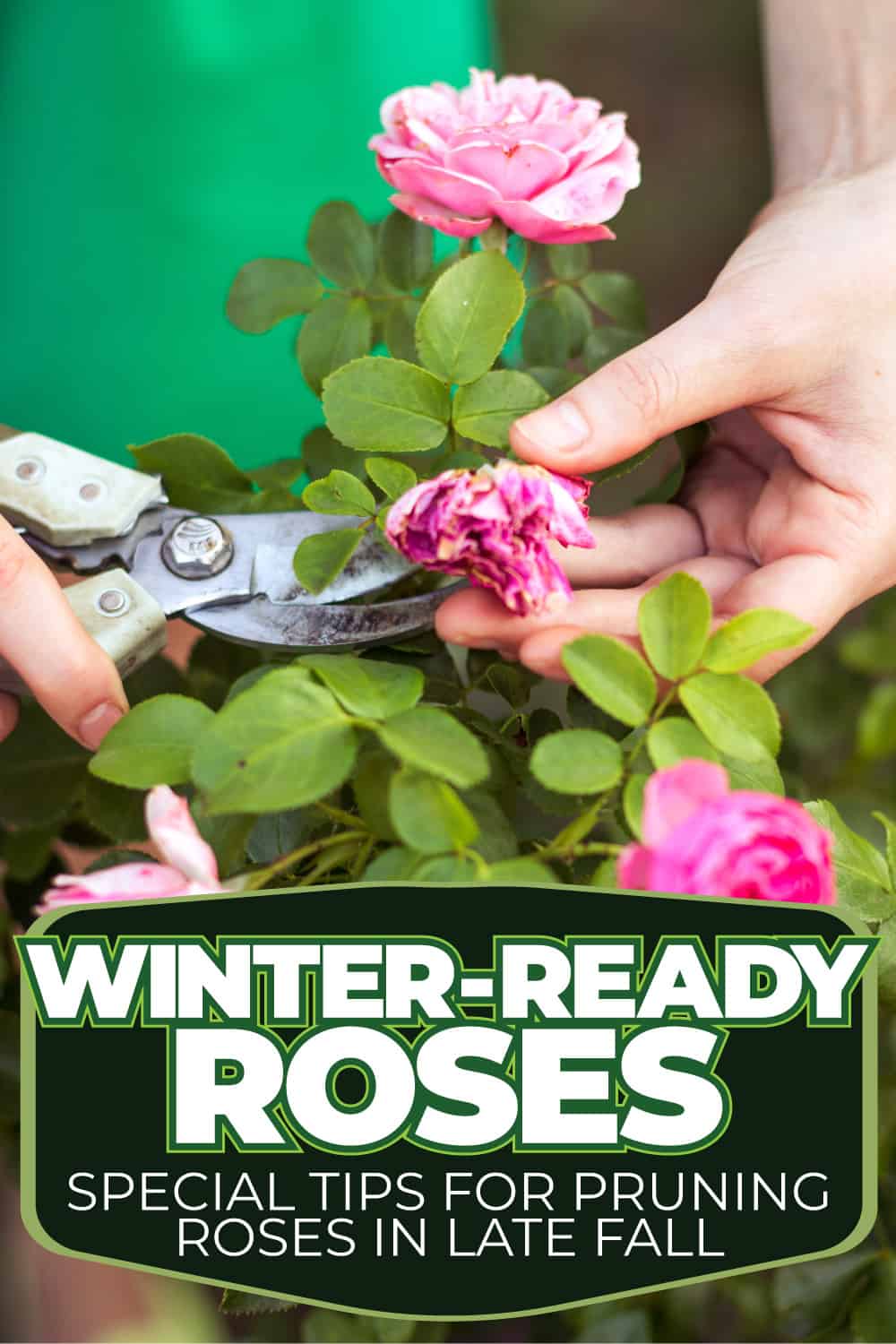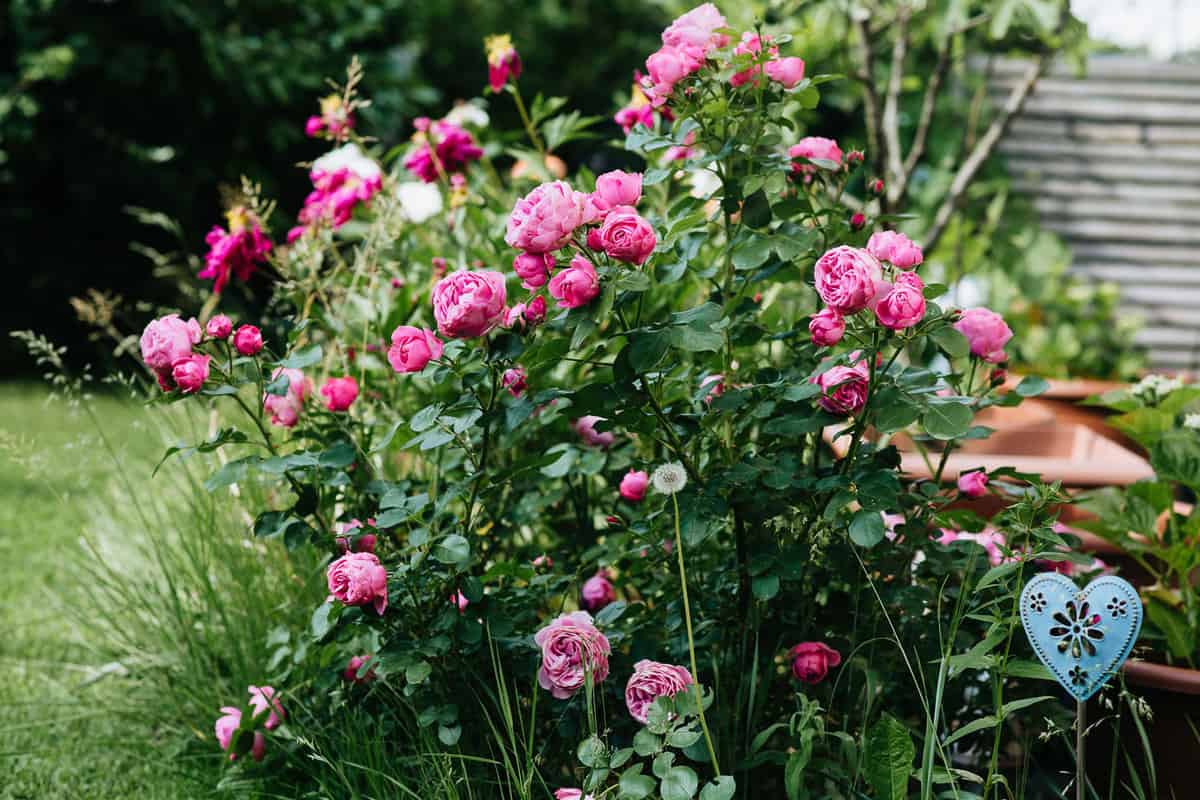Winter is coming; as the temperatures drop, it's time to prepare your garden for the colder months.
If you have roses, you know that they require special care to ensure they make it through the winter healthy and strong.
One of the most important things you can do for your roses in late fall is to prune them correctly.
Pruning your roses in late fall is essential for their health and longevity. Proper pruning helps to improve air circulation, reduce disease risk, and prevent wind damage.
It also encourages dormancy throughout the winter, prevents them from sprouting new shoots too early, and protects them from winter damage.
When it comes to pruning your roses in late fall, there are some special considerations to remember. Scroll now to know everything from when to prune, how to prune, and what tools to use!

The Rose Plant
Roses are one of the most popular flowering plants in the world. They come in various colors and sizes and are often used to add beauty and fragrance to gardens.
Rose Species and Their Winter Needs
Different species of roses have different needs when it comes to winter care. Some roses are hardier than others and can withstand colder temperatures, while others are more delicate and require extra protection.
Here are some of the most common species of roses and their winter needs:
Shrub Roses
These roses are generally hardy and can withstand colder temperatures. However, they still need some protection during the winter.

You can cover the base of the plant with mulch or soil to protect the roots from freezing.
Climbing Roses
Climbing roses are more delicate than shrub roses and require extra protection during the winter.

You can cover the base of the plant with mulch or soil and wrap the canes with burlap to protect them from the cold.
Hybrid Tea Roses
Hybrid tea roses are the most delicate of all the rose species and require the most protection during the winter.

You should cover the base of the plant with mulch or soil, wrap the canes with burlap, and prune them back to about 18 to 24 inches to prevent wind damage.
Importance of Pruning for Roses
Pruning is essential to rose care, especially in the late fall when preparing for winter.
- Remove Dead Wood: Remove any dead or diseased wood from the plant. This will help to prevent the spread of disease and pests.
- Cut Back Canes: Cut back the canes to about 18 inches. This will help to prevent wind damage during the winter.
- Remove Weak Growth: Remove any weak growth from the plant. This will help to promote new, healthy growth in the spring.
Check this post for additional information: Where Do You Cut When Pruning A Plant?
When to Start Pruning
Ideal Time for Pruning
The ideal time to start pruning your roses is after the season's first frost. This usually happens in late fall, around October or November, depending on your location.
Pruning after the first frost signals the plant that it's time to go dormant, which is essential for winter survival.
If you prune your roses too early, the plant may produce new growth, which can be damaged by frost and cold weather.
On the other hand, if you prune too late, the plant may not have enough time to harden off before winter, leading to damage.
Weather Considerations
When deciding when to start pruning, consider the weather forecast. Ideally, you want to prune on a dry day when temperatures are above freezing.
Pruning on a wet day can increase the risk of disease while pruning on a freezing day can damage the plant.
If you're unsure about the weather, it's better to wait than risk damaging your roses. Remember, pruning is a form of stress for the plant, and you want to minimize stress during the winter months.
Pruning Techniques
Equipment Needed
Before you start pruning, make sure you have the following equipment ready:
- Pruning shears
- Loppers
- Thick gloves
- Safety goggles
Step-by-Step Pruning Guide
1. Start by Removing Any Dead or Diseased Canes
Cut them off at the base of the plant and dispose of them properly.
2. Next, Remove Any Crossing or Rubbing Canes
These can cause damage to the plant and should be cut off at the base.
3. Cut Back Any Remaining Canes
Cut back any remaining canes to about 2/3 of their original height. Make sure to cut at a 45-degree angle, just above a bud facing outward.
4. Remove Any Remaining Leaves
Remove any remaining leaves on the plant. This will help prevent disease and pests from overwintering on the plant.
5. Finally, Clean Up Any Debris
Clean up any debris around the base of the plant and dispose of it properly.
Looking for a comprehensive guide? Read this: The Ultimate Guide to Knockout Roses: Planting, Pruning, and Fertilizing Tips
Check these pruning shears on Amazon.
Post-Pruning Care
Protecting Pruned Roses
After pruning your roses in late fall, protecting them from harsh winter weather is essential.
One way to do this is by adding a layer of mulch around the base of the plant. This will help to insulate the roots and protect them from freezing temperatures.
Another option is to cover the pruned roses with burlap or protective fabric. This will help to shield them from the wind and prevent them from drying out.
Secure the fabric tightly around the plant to prevent it from blowing away.
Winter Care Tips
First, be sure to continue watering your roses regularly, even if they appear to be dormant. This will help to keep the roots hydrated and prevent them from drying out.
Second, avoid fertilizing your roses during the winter months. Instead, focus on providing them with nutrients through natural means, such as compost or organic mulch.
Finally, monitor your roses for signs of disease or pests throughout the winter. If you notice any issues, address them immediately to prevent them from spreading and causing further damage.
Common Pruning Mistakes
Avoiding Over-pruning
One of the most common mistakes when pruning roses is over-pruning. It's important to remember that while pruning is necessary to promote healthy growth and flowering, too much pruning can harm your rose bushes.
Over-pruning can lead to weak, spindly growth and even kill your rose bushes if done excessively.
To avoid over-pruning, it's essential to understand what you want to accomplish with your pruning. Don't just prune for the sake of pruning.
Instead, have a specific goal, such as removing dead or diseased wood, shaping the plant, or promoting new growth.
Another way to avoid over-pruning is to take your time. Don't rush through the pruning process; don't try to do too much at once. Instead, step back and evaluate the plant before making any cuts.
Wrong Timing
Another common mistake when pruning roses is pruning at the wrong time. Pruning at the wrong time can lead to a lack of blooms, weak growth, and even damage to the plant.
Remember, pruning is an integral part of maintaining healthy, beautiful roses!

